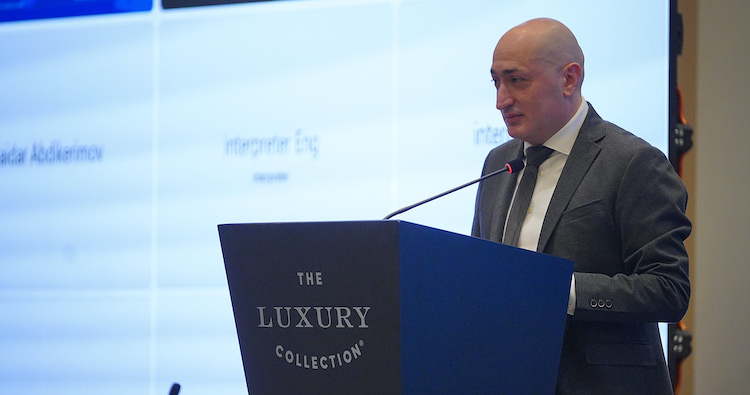Deputy Economy Minister: “growing interest” in Middle Corridor creating “new opportunities”

Deputy Economy Minister Guram Guramishvili said a “growing interest” in the Middle Corridor was creating “new opportunities” for expanding the route and attracting more cargo. Photo: Ministry of Economy
Georgian Deputy Economy Minister Guram Guramishvili on Tuesday said a “growing interest” in the Middle Corridor - a logistics route connecting Central Asia and China to Europe via the South Caucasus - was creating “new opportunities” for expanding the route and attracting more cargo.
Speaking at a presentation of the World Bank’s new study on harnessing the potential of the Corridor, Guramishvili said the route played a “vital role” in boosting economic activity and increasing trade turnover among countries involved, in addition to its transit function.
The Deputy Minister responded to the study that showed cargo flow in the Corridor could be tripled to 11 million tonnes by 2030, and said there was a need for “coordinated action” and “effective steps” to achieve the goal.
Guramishvili said a roadmap had been signed in 2022 for the development of the Corridor and included improving transport infrastructure, optimising processes, digitising the Corridor and providing an “attractive tariff policy” until 2027.
He also mentioned a joint venture of Middle Corridor Multimodal - sought by Georgia, Kazakhstan and Azerbaijan to promote the growth of container shipments in the Middle Corridor - and said it would improve coordination and attract cargo flows.
Guramishvili said domestic infrastructure was undergoing “important projects” to enhance its transport network and make the Corridor more attractive, with the projects including the modernisation of railways, finalisation of the Baku-Tbilisi-Kars railway construction, the Anaklia deep sea port project, implementation of the Maritime Single Window system in domestic ports and introduction of the Port Community System.
 Tweet
Tweet  Share
Share